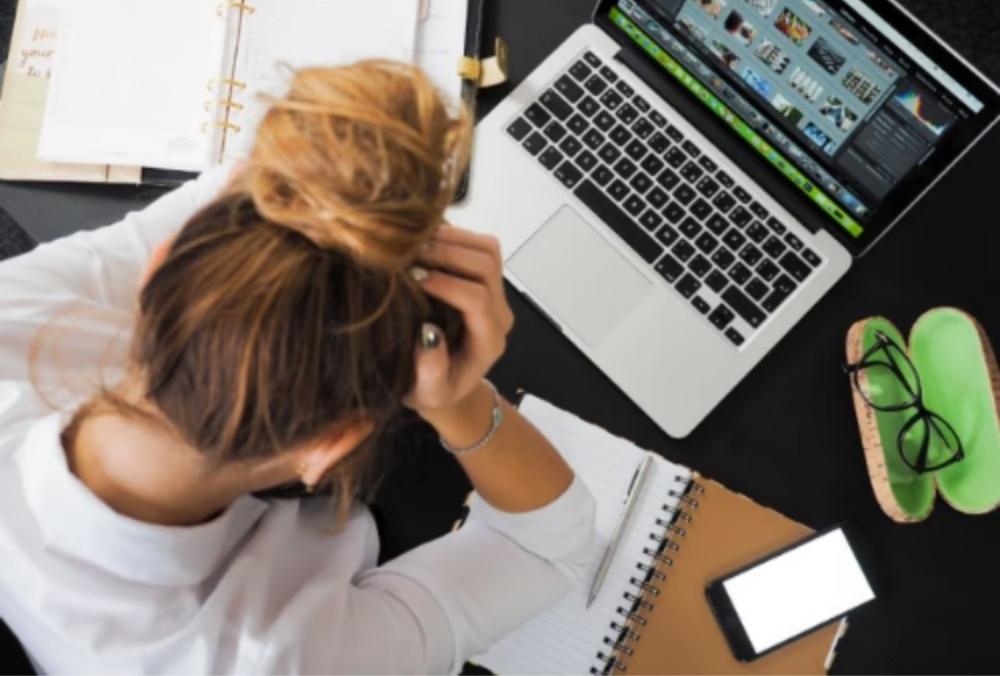Boussole
Wellness
Blog
Boussole Wellness
Blog
Let’s navigate the journey from burnout to blissful balance together!
Learn how I turned exhaustion into empowerment, and am now living a life full of energy and love.

The #1 Way to Avoid Burnout
Do you know the best way to stop feeling stressed out, overwhelmed, and exhausted?
It doesn’t require any money.
It doesn’t take a lot of time.
It can be done alone or with others.
It’s something that can be done indoors or outdoors.
And it’s something that benefits your physical and mental health.
Any guesses?
The number one way to close the stress response cycle is PHYSICAL ACTIVITY.
Physical activity is what tells your brain you have successfully survived the threat and now your body is a safe place to live.
After being chased by a woolly mammoth across the tundra, our ancestors ran to close the stress response cycle.
This is why physical activity is the single most efficient strategy for completing the stress response cycle and avoiding burnout.
You may not run after finalizing a divorce, dealing with debt, or having a conflict with a co-worker, but you still need to move your body in some way, shape, or form. So…
Walk the dog
Climb the stairs to another floor in your office building
Sweat it out in a spin class
Go for a bike ride
Try a step class, a Zumba class, a TRX class, a boot camp class
Do anything that gets your heart pumping and your lungs working a little harder than normal—
Because getting 30 minutes of physical activity is the most efficient way to eliminate the stress hormones released in the alarm stage.
How your body reacts when faced with a stressor is called the stress response cycle (also known as the fight or flight response). Stressors are anything that makes your body feel threatened or in danger. They can be physiological (for example, injury or illness), or psychological (a big presentation, a divorce, or an important deadline).
There are three stages in the stress response cycle:
Alarm Stage
At the first sign of the stressor, an area of your brain called the amygdala sends a signal to another region of your brain called the hypothalamus. The hypothalamus then activates your sympathetic nervous system and your adrenal glands release the stress hormones epinephrine and cortisol into your bloodstream causing your body to undergo several physiological changes. Your breathing increases, your heart rate rises, your muscles tense (preparing for that run to escape the woolly mammoth), and you become hyper-alert to what’s going on around you.
Resistance Stage
Once the threat has been dealt with, the parasympathetic nervous system puts the brakes on and lessens the body’s stress response. If the stressor hasn’t been dealt with, however, the stress hormones will increase and you might experience symptoms such as poor concentration, irritability, and frustration.
Exhaustion Stage
This is what happens when your body isn’t able to complete the stress response cycle. Failure to close it out leads to chronic stress which can take a toll on your body. Unchecked chronic stress leads to heart disease, stomach ulcers, sleep dysregulation, psychiatric disorders, depression, anxiety, fatigue, and burnout.
Want to avoid burnout?
Closing the stress response cycle and purging your body of the stress hormones epinephrine and cortisol is the key to unlocking the stress cycle and avoiding burnout.
Ready for the good news?
You have complete power over this!
Your ability to unlock the stress cycle is not dependent on resolving the conflict with your partner or paying back your debt overnight. You can flush out the stress hormones, close the cycle, and return to equilibrium daily using physical exercise (and other simple practices that you’ll customize inside Burnout to Bliss!).
So how much physical activity is necessary? And how often?
Enough to get your heart rate up and your breathing a little heavy.
If you only have ten minutes, that will help.
Dance in your office, take the stairs instead of the elevator, or go for a walk around the block.
Done.
If you have more time, the Public Health Agency of Canada recommends that adults 18-64 years of age be active at least 2.5 hours a week (just under 21 minutes a day, or 30 minutes/day for 5 days/week) to achieve health benefits.
Start with what is manageable, measurable, and easy.
Ask yourself, “What type of movement/physical activity can I see myself doing this month?”
Tips to add more movement/physical activity to your day:
Choose physical activities you enjoy (don’t run if you don’t like running)
Try a variety of physical activities- you might find that you have a secret talent in spin, Zumba, or pickleball!
Include different kinds of activities or movement over the week (some cardiovascular, some strengthening, some flexibility)
Make it a part of your routine and block it into your calendar (every morning, at lunch, after work, after dinner)
There are a lot of free movement classes available on YouTube- message me for recommendations on mobility, yoga, and strength training accounts to follow
Limit the amount of time you spend sitting sedentary in front of a screen (whether it’s a computer monitor, a TV, or a mobile phone)
Rather than using your vehicle, use your legs, bike, scooter, or inline skates as transportation
Get a little more moderate to vigorous aerobic activity at least a couple of times a week
Join a sports team to make it more of a social event
Get active with friends and/or family: go for a walk, a bike ride, a hike
Every step counts! Park a little farther from the door, take the stairs instead of the elevator, and walk to your community mailbox instead of stopping in the car on the way home
Set a goal. Is there a race you are interested in running? A physical challenge you’d like to achieve?
I know that it can be a lot to think about if you haven’t been doing any movement lately because you’re already feeling exhausted and overwhelmed from burnout.
But I promise you, just getting some movement every day will help you feel better.
A ten-minute walk can easily be added to your day. Build on that.
One of the pillars of a blissful life is daily movement and you deserve to live a life of bliss so start moving today!

The #1 Way to Avoid Burnout
Do you know the best way to stop feeling stressed out, overwhelmed, and exhausted?
It doesn’t require any money.
It doesn’t take a lot of time.
It can be done alone or with others.
It’s something that can be done indoors or outdoors.
And it’s something that benefits your physical and mental health.
Any guesses?
The number one way to close the stress response cycle is PHYSICAL ACTIVITY.
Physical activity is what tells your brain you have successfully survived the threat and now your body is a safe place to live.
After being chased by a woolly mammoth across the tundra, our ancestors ran to close the stress response cycle.
This is why physical activity is the single most efficient strategy for completing the stress response cycle and avoiding burnout.
You may not run after finalizing a divorce, dealing with debt, or having a conflict with a co-worker, but you still need to move your body in some way, shape, or form. So…
Walk the dog
Climb the stairs to another floor in your office building
Sweat it out in a spin class
Go for a bike ride
Try a step class, a Zumba class, a TRX class, a boot camp class
Do anything that gets your heart pumping and your lungs working a little harder than normal—
Because getting 30 minutes of physical activity is the most efficient way to eliminate the stress hormones released in the alarm stage.
How your body reacts when faced with a stressor is called the stress response cycle (also known as the fight or flight response). Stressors are anything that makes your body feel threatened or in danger. They can be physiological (for example, injury or illness), or psychological (a big presentation, a divorce, or an important deadline).
There are three stages in the stress response cycle:
Alarm Stage
At the first sign of the stressor, an area of your brain called the amygdala sends a signal to another region of your brain called the hypothalamus. The hypothalamus then activates your sympathetic nervous system and your adrenal glands release the stress hormones epinephrine and cortisol into your bloodstream causing your body to undergo several physiological changes. Your breathing increases, your heart rate rises, your muscles tense (preparing for that run to escape the woolly mammoth), and you become hyper-alert to what’s going on around you.
Resistance Stage
Once the threat has been dealt with, the parasympathetic nervous system puts the brakes on and lessens the body’s stress response. If the stressor hasn’t been dealt with, however, the stress hormones will increase and you might experience symptoms such as poor concentration, irritability, and frustration.
Exhaustion Stage
This is what happens when your body isn’t able to complete the stress response cycle. Failure to close it out leads to chronic stress which can take a toll on your body. Unchecked chronic stress leads to heart disease, stomach ulcers, sleep dysregulation, psychiatric disorders, depression, anxiety, fatigue, and burnout.
Want to avoid burnout?
Closing the stress response cycle and purging your body of the stress hormones epinephrine and cortisol is the key to unlocking the stress cycle and avoiding burnout.
Ready for the good news?
You have complete power over this!
Your ability to unlock the stress cycle is not dependent on resolving the conflict with your partner or paying back your debt overnight. You can flush out the stress hormones, close the cycle, and return to equilibrium daily using physical exercise (and other simple practices that you’ll customize inside Burnout to Bliss!).
So how much physical activity is necessary? And how often?
Enough to get your heart rate up and your breathing a little heavy.
If you only have ten minutes, that will help.
Dance in your office, take the stairs instead of the elevator, or go for a walk around the block.
Done.
If you have more time, the Public Health Agency of Canada recommends that adults 18-64 years of age be active at least 2.5 hours a week (just under 21 minutes a day, or 30 minutes/day for 5 days/week) to achieve health benefits.
Start with what is manageable, measurable, and easy.
Ask yourself, “What type of movement/physical activity can I see myself doing this month?”
Tips to add more movement/physical activity to your day:
Choose physical activities you enjoy (don’t run if you don’t like running)
Try a variety of physical activities- you might find that you have a secret talent in spin, Zumba, or pickleball!
Include different kinds of activities or movement over the week (some cardiovascular, some strengthening, some flexibility)
Make it a part of your routine and block it into your calendar (every morning, at lunch, after work, after dinner)
There are a lot of free movement classes available on YouTube- message me for recommendations on mobility, yoga, and strength training accounts to follow
Limit the amount of time you spend sitting sedentary in front of a screen (whether it’s a computer monitor, a TV, or a mobile phone)
Rather than using your vehicle, use your legs, bike, scooter, or inline skates as transportation
Get a little more moderate to vigorous aerobic activity at least a couple of times a week
Join a sports team to make it more of a social event
Get active with friends and/or family: go for a walk, a bike ride, a hike
Every step counts! Park a little farther from the door, take the stairs instead of the elevator, and walk to your community mailbox instead of stopping in the car on the way home
Set a goal. Is there a race you are interested in running? A physical challenge you’d like to achieve?
I know that it can be a lot to think about if you haven’t been doing any movement lately because you’re already feeling exhausted and overwhelmed from burnout.
But I promise you, just getting some movement every day will help you feel better.
A ten-minute walk can easily be added to your day. Build on that.
One of the pillars of a blissful life is daily movement and you deserve to live a life of bliss so start moving today!
“Keep good company, read good books, love good things, and cultivate soul and body as faithfully as you can.”
~ Louisa May Alcott
Connect
© Copyright 2025 Boussole Wellness Coaching | Helping women find more balance and feel more fulfilled!
Photography by Christina Louise Branding









